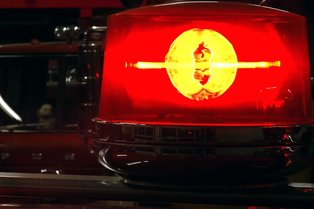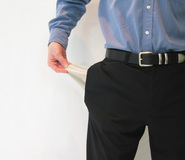 As a financial planner, when a potential client comes to me with money to invest they often ask, “How should I start investing my money?” They know that they need to invest and have extra capital on hand to do so, but they’re putting the cart before the horse. Before even speaking with them about their risk tolerance, current investments, potential strategies for future investing etc. I always ask, “How much is in your emergency fund?” The answers can range from “What’s an emergency fund?” to having hundreds of thousands in a savings account. But more times than not, they don’t know exactly how much they should have in savings. An emergency fund is a savings account dedicated to bailing you out when unforeseen financial troubles arise. This fund is for repairing your HVAC unit, fixing your car, unexpected medical bills, and especially loss of wages. The emergency fund shouldn’t be so small that you aren’t able to cover a financial crisis without going into debt; but not so large that you have too much capital allocated in cash. General guidelines for an emergency fund say it should be around 3 months of expenses for two incomes, 6 months of expenses with one income- for both single and married investors. This is a baseline, but your Emergency Fund should be dictated by your individual circumstances. You and your financial planner should collaborate to determine the amount that is right for you. Once the proper amount is determined, your emergency fund should be moved into a high yield savings account. Most of us keep our savings at a big bank and receive terrible interest rates for parking our money there. While it may not seem like a lot of extra money, going from an account producing 0.01% interest vs. 1.0% interest just makes sense. Why not let your money earn the most it can for you? For example, say you have $10,000 in your Emergency Fund: Interest Rate Amount You Earn/Year Bank A 0.01% $10 Bank B 1.0% $100 I know, this is not a huge difference, right? But over 10 years, you have received $900 more by utilizing Bank B. While you will have to pay more in taxes with Bank B, you will still come out well ahead. I encourage you to look at the current return on your savings account, then go here to compare it to other options available. You may be pleasantly surprised what this simple move can do to increase your earnings on the money you have already saved.  Individuals with special needs and families that seek to help, have long been hamstrung by the Catch 22 of public assistance. If a family provides too much financial assistance, the beneficiary loses access to government assistance. If the family does not help the individual may suffer from lack of access to housing and education. For special needs individuals to receive an inheritance they needed a special needs trust or the inheritance was quickly depleted until the special needs individual once again attained poverty level to qualify for public assistance. In 2014 congress passed the ABLE act to allow special needs beneficiaries’ families to establish a savings vehicle funded with up to $14,000 per year (adjusted for inflation) to supplement public assistance. The account may be used to pay for needs such as housing, education, transportation, and other expenses that improve the quality of life for those with disabilities. Similar to 529 college saving plans, ABLE accounts are established by the states, but you can participate in the plan of a state other than your home state if you choose. The account may not hold more than $100,000 of assets without running afoul of the Supplemental Security Income rules, but still this is an improvement over the expense and complexity of using a special needs trust. For many families this account will prove invaluable. To qualify for an account, the individual must have significant disabilities and the age at onset of the disability must be prior to attaining age 26. At the death the state where the beneficiary resides may be able to claim any balance remaining in the account under the Medicare payback rules. Currently ABLE plans have been established by Florida, Nebraska, Ohio, and Tennessee. If you are not a resident of one of these states non-residents are allowed to establish accounts in Nebraska, Ohio, and Tennessee. For more information, you can visit the ABLE National Resource Center online.  Throw away your useless May 2016 monthly budget and just start over. Seriously, 99% of us have not stuck completely to the plan, and that’s expected. But that doesn’t mean you should go and spend as you please, it just means it’s time to start over. Reconstructing your budget around the middle of the month is a helpful way to stay in control of your money. By this time your bills are paid, mortgage/rent has been sent off, and you’re now dealing with necessities (gas, groceries etc.) and disposable income. The key here is disposable income. Have you already spent most of it? Do you have some surplus you should be putting into a savings account? Can you maintain the month’s plan without adding extra onto a credit card? These are all things you should be going back over in the middle of the month that will help you stay in control. Because there’s two ways we can live with money: You can control your money…or your money can control you.  savingNo matter how much we need to save, no matter how badly we want to break out of the paycheck to paycheck life, saving money is hard. It’s hard because we get an immediate reward for spending money. I give you $5 you give me a Mocha Latte. Saving on the other hand forces us to delay receiving our reward. I give you $5 and in twenty years or so you give me $20 to enjoy in my old age. Sometimes it helps if you can visualize the future. In 20 years I will spend my days walking in the woods and exploring new cities. I see myself spending my time with my grandchildren, going to the zoo, planting my garden. Visualization helps some but it’s still hard to save. You can also make saving easier by planning things you enjoy that are free or cost very little. Maybe you can go visit a museum or a nearby town. Go for a bike ride or a Sunday afternoon drive. Look for local festivals. Maybe only take a few dollars with you on these short trips so you won’t be tempted to spend. You can make saving automatic by having some amount debited from your paycheck or checking account each month or even each week. If you don’t see it, you won’t miss it. All these things can make saving easier, but it will never be easy.  As a financial advisor, I often talk about being aware of where you are spending your money, because I believe awareness triggers restraint and restraint leads to better savings habits. While saving money is a good thing, buying something that is cheap is often expensive. If you are planning a purchase look for value, don’t make a purchase just because an item is ‘cheap’. Mindful purchases that you have determined represents good value can bring years of joy and usefulness into your life. Making a spur of the moment purchase because something seems like a deal often leads to regret. Be frugal with your spending but never cheap. |
Archives
April 2024
Categories
All
|
 RSS Feed
RSS Feed